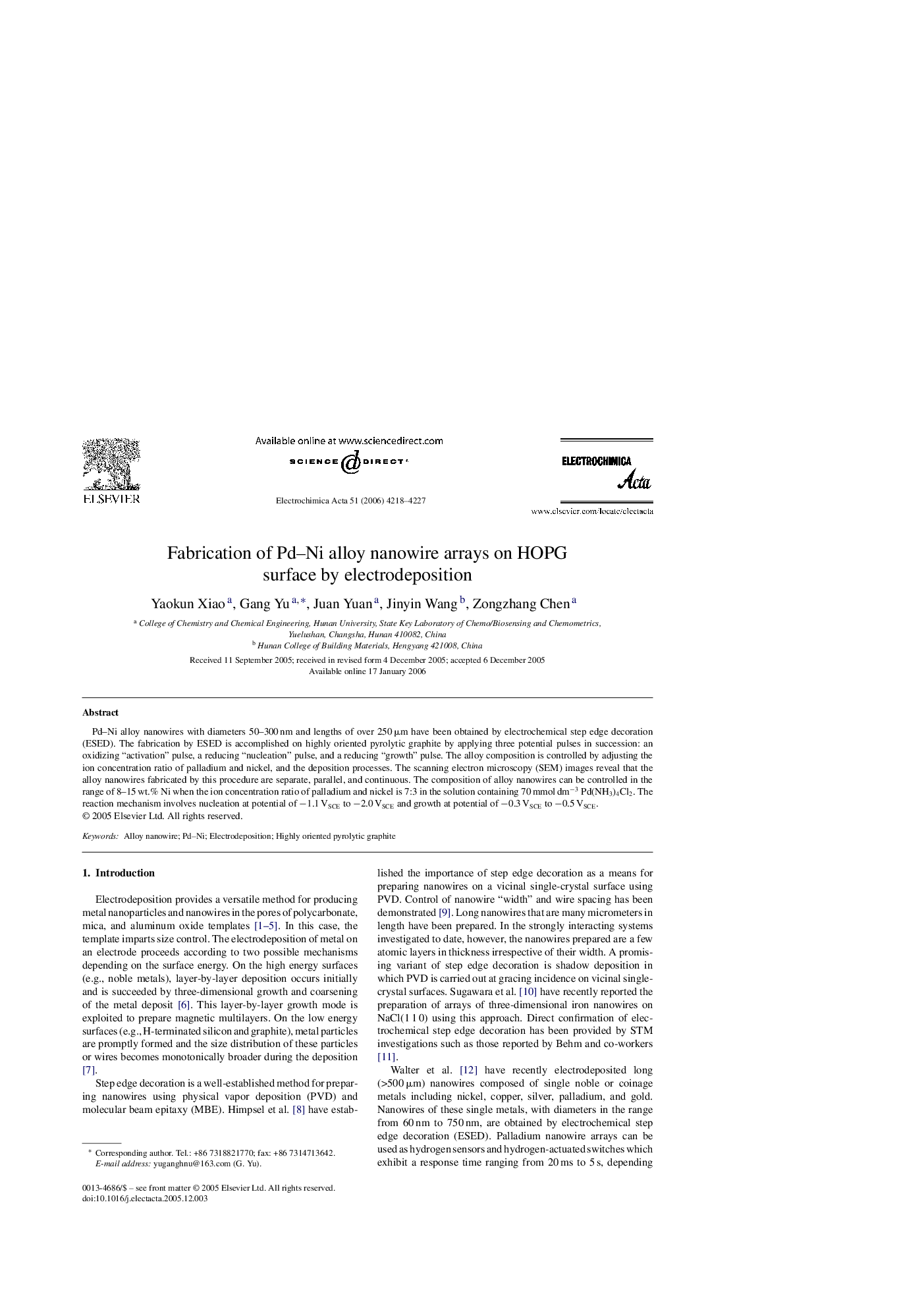| Article ID | Journal | Published Year | Pages | File Type |
|---|---|---|---|---|
| 196305 | Electrochimica Acta | 2006 | 10 Pages |
Pd–Ni alloy nanowires with diameters 50–300 nm and lengths of over 250 μm have been obtained by electrochemical step edge decoration (ESED). The fabrication by ESED is accomplished on highly oriented pyrolytic graphite by applying three potential pulses in succession: an oxidizing “activation” pulse, a reducing “nucleation” pulse, and a reducing “growth” pulse. The alloy composition is controlled by adjusting the ion concentration ratio of palladium and nickel, and the deposition processes. The scanning electron microscopy (SEM) images reveal that the alloy nanowires fabricated by this procedure are separate, parallel, and continuous. The composition of alloy nanowires can be controlled in the range of 8–15 wt.% Ni when the ion concentration ratio of palladium and nickel is 7:3 in the solution containing 70 mmol dm−3 Pd(NH3)4Cl2. The reaction mechanism involves nucleation at potential of −1.1 VSCE to −2.0 VSCE and growth at potential of −0.3 VSCE to −0.5 VSCE.
